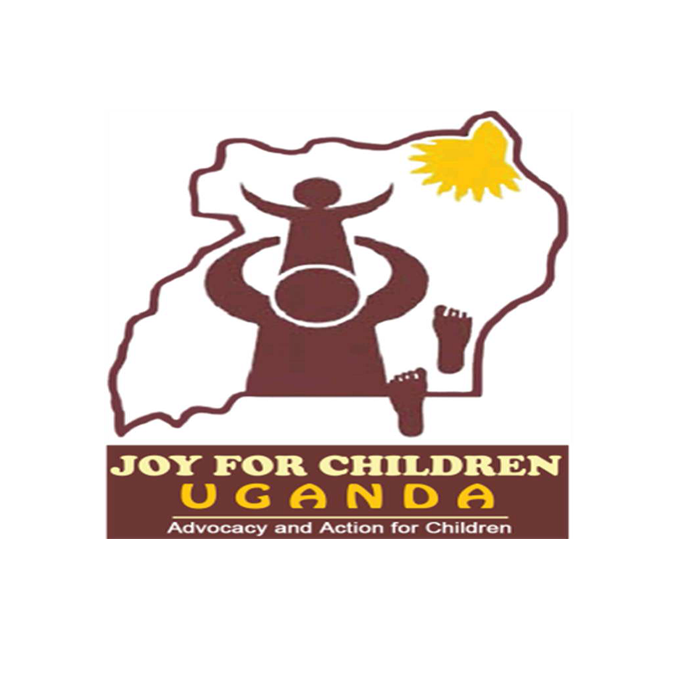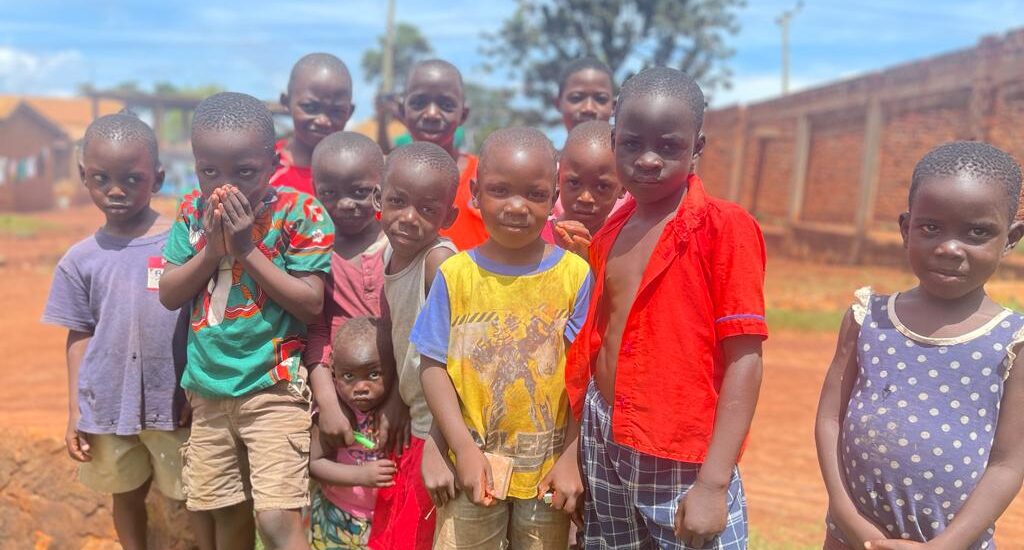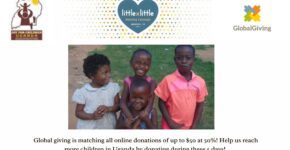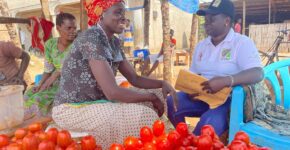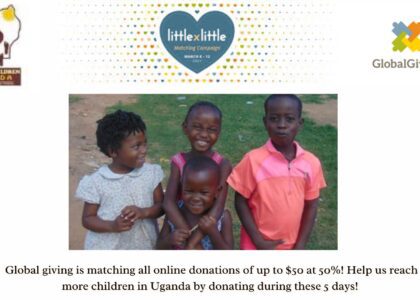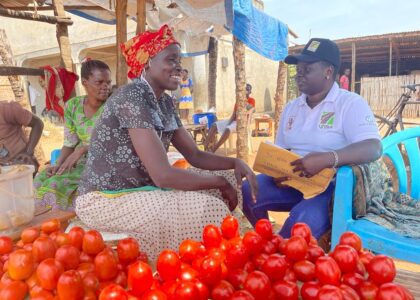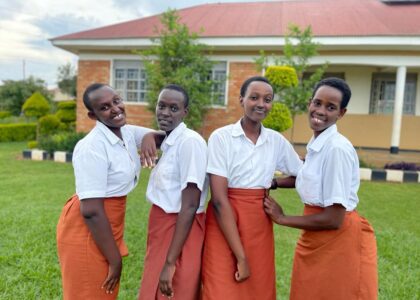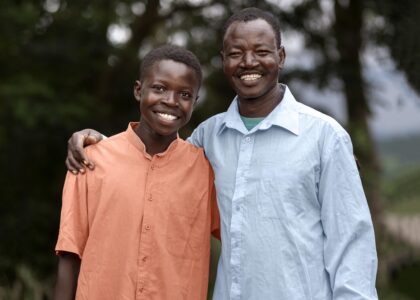Violence is defined under article 19 of the Convention on the Rights of Children to mean all forms of physical or mental violence, injury and abuse, neglect or neglect treatment, maltreatment or exploitation, including sexual abuse. Violence against children physical, psyclogical and mental violence, and sexual violence. Violence against children in Uganda is at a rising scale. Reports of cruel and humiliating punishment, abandonment, sexual abuse and all other forms of violence are seen every day.
Every child has the right to his or her physical and personal integrity, and protection from all forms of violence. Under article 21 of the Constitution of the Republic of Uganda, all persons are equal before and under the law in all spheres of political, economic, social and cultural life and shall enjoy equal protection of the law. Children are therefore entitled to the enjoyment of equal human rights enshrined both under the international instruments as well as domestic statutes.
Internationally, Uganda is signatory to a number of international instruments which include; the International Convention on Economic, Social and Cultural Rights, 1966, the Convention on the Elimination of All Forms of Discrimination against Women,1979, the Convention on the Rights of the Child among others, 1990. Domestically, there are a number of laws enacted by parliament intended to fight violence against children. These include the 1995 Constitution of the Republic of Uganda as amended, the Children Act 1998, the Children (Amendment) Act of 2016, the Domestic Violence Act, 2020, Prevention of Torture Act,2012, Prevention of Female Genital Mutilation Act, 2010, Trafficking in Person Act, 2009, Penal Code Act Cap 120, among others.
The Convention on the Rights of Children
The Convention on the Rights of Children sets out legally binding standards on state parties in relation to the rights of children. The convention clearly emphasizes that children are holders of human rights. The Convention therefore provides a framework and standards which should dictate all the laws, policies and practice of states in the protection and promotion of the rights of children.
Article 19 of the Convention on the Rights of Children requires states to take all appropriate legislative, administrative, social and educational measures to protect the child from all forms of physical or mental violence, injury, abuse, neglect, neglect treatment, maltreatment or exploitation including sexual abuse, while in the care of the parents, legal guardian or any other person who has the care of the child.
Article 28 of the Convention on the Rights of Children provides that school discipline should be administered in a manner consistent with the child’s human dignity and in conformity with the convention.
Articles 32, 33, 34, 35, and 36 require the protection of children from all forms of exploitation: economic exploitation and any form of work that is likely to be hazardous or to interfere with the child’s education, to be harmful to the child’s health or physical, mental, spiritual, moral or social development, from illicit use of narcotic drugs and psychotropic substances and trafficking of such substances, from all forms of sexual exploitation and sexual abuse and all other forms of exploitation prejudicial to any aspect of the welfare of the child.
The Constitution of the Republic of Uganda 1995
The 1995 Constitution of the Republic of Uganda is the supreme law of the land. As such it contains particular provisions intended to fight violence persons including children. Article 34 of the Constitution provides for the rights of children. Under the article, children have a right to know and be cared for by their parents or those entitled by law to bring them up, they have a right to education at the expense of the state and the parents, and they are entitled to be protected from social or economic exploitation.
Article 24 of the Constitution requires that no person shall be subjected to any form of torture or cruel, inhuman or degrading treatment or punishment. Article 25 of the Constitution prohibits persons including children to be held in slavery, servitude and forced labor.
The Prevention of Torture Act, 2012
The prevention of Torture Act was enacted to operationalize articles 24 and 44 of the 1995 Constitution, to the respect of human dignity and protection from inhuman treatment by prohibiting and preventing any form of torture, cruel, inhuman or degrading treatment, to define torture and to comply with Uganda’s obligation as a state party to the United Nation’s Convention against Torture and Other Cruel, Inhuman or Degrading Treatment or Punishment.
The Act defines torture to mean any act or omission, by which severe pain or suffering whether physical or mental, is intentionally inflicted on a person by or at the instigation of or with the consent or acquiescence of any person whether a public official or other person acting in an official capacity or private capacity for purposes of;
- obtaining information or a confession from the person or any other person;
- Punishing that person for an act he or she or other person has committed, or is suspected of having committed or planning to commit; or
- Intimidating or coercing the person or any other person to do, or to refrain from doing, any act.
A person who commits the offence of torture commits an offence and on conviction is liable to imprisonment for fifteen years or a fine of three hundred and sixty currency points. (UGX. 7,200,000).
The Act also spells circumstances that aggravate the torture to aggravated torture. These include among others, the offender uses or used sex as a means of torture, the victim was a person with a disability, the victim was pregnant or becomes pregnant, the victim was under the age of 18 years among others. Where are aggravating circumstances, the offender is liable to conviction to imprisonment for life.
The Prevention of Torture Act provides for instances of torture to include;
Physical torture include; Systematic beating , head banging, punching, kicking, striking with truncheons , rifle butts, jumping on the stomach, food deprivation or forcing feeding with spoiled food, animal or human excreta, electric shocks, cigarette burning, burning by electronically heated rods, hot oil, acid, by the rubbing of pepper or other chemical substance on mucous membranes, or acids or species. The submersion of the victim’s head in water or water polluted with excrement, urine, vomit or blood, being tied or forced to assume a fixed and stressful body position, rape and sexual abuse, including the insertion of foreign bodies into the sexual organs or rectum or electrical torture of the genitals, mutilation, such as amputation of the essential parts of the body such as genitalia, ears , dental torture or the forced extraction of the teeth, the use of plastic bags and the materials placed over the victim’s head with the intention to asphyxiate.
Children Act 1998
The Children Act under section 3 provides for the welfare and guiding principles regarding all matters in which children are involved. The welfare of the child is the paramount or primary consideration while determining matters related to them. The Act has in place several provisions intended to curb violence against children as seen below.
Section 7 of the Act on harmful customary or cultural practices. Under section 7 of the Act, no person is obligated to expose to a child to any customary or cultural practice that is harmful to his health, well-being, education or social –economic development. Such cultural practices child early marriages, female genital mutilation among others.
Section 8 of the Children Act prohibits the employment of children or engagement of children in any activity that may be harmful or hazardous to their health or physical, spiritual, moral or social development. Harmful or hazardous employment include work which exposes a child to physical or psychological torture, sexual abuse, work underground, work at dangerous heights or in confined spaces, work with dangerous machinery, equipment and tools, manual handling or transportation of heavy loads, work with chemical or dangerous substance, work under extreme temperatures, high level of noise, working for longer hours or nay other of child labour which includes slavery, trafficking in person, debt bondage, forced recruitment for use in armed prostitution, pornography and illicit activities.
Section 8A of the Children Act further prohibits sexual exploitation. The section states that a person shall not engage a child in any work that exposes the child to activities of sexual nature whether paid or not.
Further, Section 94(9) of the Children Act provides that no child is to be subjected to corporal punishment.
Domestic Violence Act 2020
The Domestic Violence Act was enacted by parliament in 2020 to provide for the protection and relief of victims of domestic violence and to provide for punishment of the perpetrators of domestic violence.
According to section 2 of the Domestic Violence Act, domestic violence constitutes any act or omission which harms, injures or endangers the health, safety, limb or well-being, whether mental or physical, of the victim or tends to do so and includes physical abuse, sexual abuse, emotional , verbal and psychological abuse and economic abuse, or an act or mission that harasses, harms, injures or endangers the victim with a view to coercing him or her or any other person related to him or her to meet any unlawful demand for any property or valuable property among others.
It is important that domestic violence is committed within a domestic relationship. Section 3 of the Domestic Violence Act defines a domestic relationship to mean a family relationship, a relationship similar to a family relationship or a relationship in a domestic setting that exist or existed between the victim and a perpetrator.
In Uganda, children are domestically abused sexually, emotionally, physically, psychologically thus affecting their wellbeing in society.
The Prohibition of Female Genital Mutilation Act 2010
The Prohibition of Female Genital Mutilation Act was enacted in 2010 in order to give effect to the decision of court in Law v Attorney General and to fulfill Uganda’s international obligation as a state party to the International Convention on Human Rights.
The purpose for the enactment of the Act is to prohibit for the female genital mutilation and to prosecute and punish offenders and to protect victims, girls and women under threat of female genital mutilation.
Section 2 of the Act establishes the offence of female genital mutilation as well as punishment for the offence. A person who commits female genital mutilation on conviction is liable to imprisonment not exceeding ten years.
The Act further provides for aggravating circumstances to the offence of female genital mutilation. These aggravating circumstances occur where;
Death occurs as a result of FGM, the victim suffers disability, the offender is a parent, guardian or person in authority, the victim is infected with HIV as a result of FGM, the act is done by a health worker. A person who commits the offence of aggravated female genital mutilation is liable on conviction to life imprisonment.
Penal Code Act Cap 120
The Penal Code Act is the major penal act in Uganda criminalizing a number of offences generally as well as offences against children.
Specifically on children, offences on violence against children include, defilement, kidnap with intent to rape, etc.
Generally, the Act provides offences such as murder, manslaughter, abduction among other as well as penalizing the offenders. A few are discussed hereunder.
Rape: Section 123 of the Penal Code establishes the offence of rape. The offence is committed by a person who has carnal knowledge (sex) of a woman or a girl, without her consent, or with the consent if the consent is obtained by force, threats or intimidation of any kind or fear of bodily harm or false representation as to the nature of the act or in case of a married woman, by personating her husband. A person who commits rape is liable to suffer death.
Abduction Section 126 of the Penal Code Act: The offence of abduction is committed by a person be it male or female, who with intent to marry or to be married or to have sexual intercourse with another person takes away or detains him or her against his or her will or unlawfully takes another person under the age of eighteen out of custody of any of the parents or any person having lawful custody.
Indecent assault section 128 of the Penal Code Act: The offence is committed by a person who unlawfully and indecently assaults any woman or girl. The punishment for indecent assault is fourteen years.
Defilement section 129: Any person, who performs a sexual act with another person below the age of eighteen years, commits the offence of defilement and on conviction liable to life imprisonment.
The Prevention of Trafficking in Person’s Act, 2009
The Prevention of Trafficking in Person’s Act prohibits the trafficking of persons; it creates offences and punishment for the offenders. The Act defines a child to mean a person below the age of 18 years. Under the act, no person shall be subjected to exploitation. Exploitation includes sexual exploitation, forced marriage, child marriage, forced labor, harmful child labor, use of a child in armed conflict, use of a person including a child in illegal activities, debt bondage, slavery or practices similar to slavery, human sacrifice, the removal of organs or body parts for sale for purposes of witchcraft, harmful rituals or practices.
The Act establishes the offence of aggravated trafficking in person which occurs where the victim of trafficking is a child; adoption, guardianship, fostering and other orders in relation is undertaken for the purpose of exploitation. Additionally, the Act establishes the offence of trafficking in children. The offence is committed by a person who does any act under section 3 which include recruiting, transporting, transfers habours or receives any person by means of threat or use of force or coercion or deception or uses a child in any armed conflict, removes any part, organ or tissue from the body of the child for purposes of human sacrifice, uses the child in the commission of a crime, abandons a child outside the country, uses a child or any body part of a child in witchcraft rituals.
Way forward
Despite the existence of adequate legislation on the law against violence on children, children continue to face violence in Uganda. Much effort is therefore needed.
- There is need for effective reporting and documentation of cases on violence against children.
- Government must also disseminate information and effectively sensitize to the community about violence against children.
- The laws on violence against children must be effectively implemented by the different bodies to wit the police, and the judiciary. There is lack of implementation of the Trafficking in Person Act and the Domestic Violence Act despite such laws having been passed by parliament.
